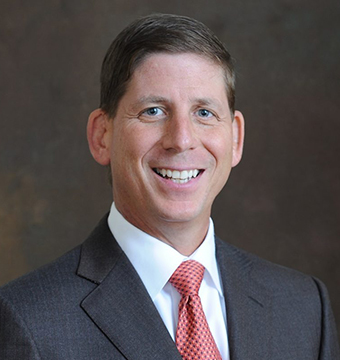A week or two tardy on this year’s predictions.
1. Indiana wants me. Reminiscent of R. Dean Taylor’s 1970 hit, Indiana will be a significant part of the healthcare conversation. Why? Vice-President Mike Pence and his former consultant now nominee for CMS,Seema Verma will have a substantive influence on the replacement for ACA. Yes, ACA will be repealed (and it might by the time this blog posts) but that is simply a budgetary, political move. The more important question is what comes next, wholesale change vs. tweaks to the system. Let’s face it, you can’t argue about the large drop in uninsured across the U.S. and there certainly won’t be a quick effort to wholesale abandon those kinds of numbers. Where ACA succeeded in lowering uninsured, it massively failed at affordability. The majority of individuals through their employer have had premiums increase, benefits decrease, and much more out of pocket in the form of higher deductibles and copays. Add to the mix the significant number of insurers who have dropped out of the exchange and individual market (for example, in the majority of counties in KY there is only one option which really means there are no options), and few would argue that many changes are necessary. Last week, opting out of #GrahamSessions2017, I decided to go to Washington DC and lobby a little on #physicaltherapy and healthcare. One recurrent theme, nobody really knows! Add to confusion The Donald’s tweet on “insurance for everybody”, and you have more uncertainty than Oklahoma January weather. In light of all of this, my prediction is that you will see more state waivers granted to allow significant flexibility. This flexibility will be in the form of health plan design, personal responsibility (e.g. Indiana’s $1 month payment for medicaid by recipients), and block grants (fixed amount of money to the states to care for the approximate 73M on medicaid). Of course, this brings it full circle to state’s adopting generally what Indiana has done! How will this impact PT? For those in private practice willing to play in the medicaid game, look to see more growth in these patients, albeit at low rates but likely not hinged to the oppressive medicare rules. Some states are already seeing this phenomenon. I also see a very energetic and massive attempt to derail the regulations including the overly process oriented paperwork that decreases time providers spend with patients by almost 30%, adds zero value but contributes to provider burnout. I believe you will see regulations finally ratcheted back across the board at all healthcare and business levels.
2. Enlightened Employers continue bending cost curves. The best employers are seeing drops in their musculoskeletal costs by two activities-dropping the middlemen of the world (e.g. MedRipUsOff, MisAligned Networks) who make margin off of providers and do not reap sustainable savings and adopting a “Players, Pathway, Proof” model of care by collaborating with physicians, mid-level providers, and #physicaltherapy. The pathway of care changing to direct access and the proof is resolved care, less cost, and much higher efficiency.
3. Growth in #physicaltherapy bundled payment. However, contrary to your first thoughts, this will not be in CMS trials and tribulations but in the private sector, particularly worker’s compensation where you will see providers collaborating on payments for spine, shoulder, and knee surgery and rehabilitation including provider payments, DME, facility fee, and anesthesia.
4. Continued growth in outpatient PT. Just like last year, more new patients accessing #physicaltherapy every month. With unemployment below 5% and many payors grasping the ROI of #physicaltherapy vs. surgery, unquestionably more new patients, less visits. Of course, this puts our highest value at the odds of those who want to put is in a narrow minded severity/intensity mode of payment scheme (more on that HERE). Payment models have to align with PT’s operating at the highest level of our licenses to be effective, not the most in compliance with the rules of medicare and our National Association’s antiquated models of care which emphasizes rules, restrictions, documentation, and a prescriptive orientation. Perhaps they revisit this in 2017 including adoption of a permissive model of care?
5. Growth in pain sciences and non-clinical indicators of patient care. Tacit knowledge skills, empathy, communication, listening, and emotional intelligence will be more emphasized in our profession and for good reason-the evidence is mounting (including a piece in NY Times the other day). It’s the combination of hands-on evidence based care and the evidence based communication skills that will get us the best results and continue to differentiate us.
6. Continued consolidation of providers. This streak will continue but I am predicting it will be slowed down from the past few years. Overall, our $31B+ industry will grow at less than double digits and will still be very fragmented. Bigger companies will get bigger but there is still a lot of craft beer entrants with tap rooms and positive vibes. In general, there is a lot of optimism go around in our profession and for very good reasons!
Here’s to tracking on a great 2017.
Thoughts? Any other predictions?
@physicaltherapy
